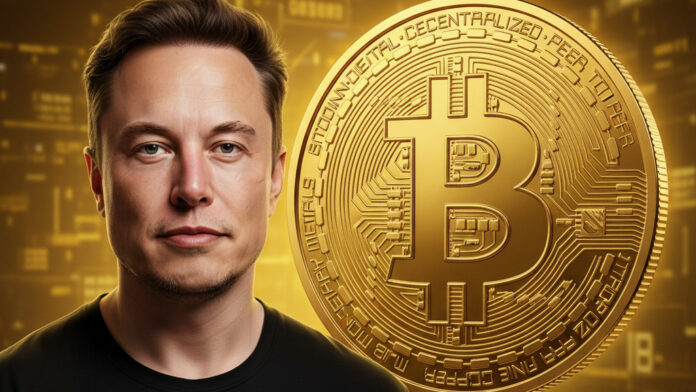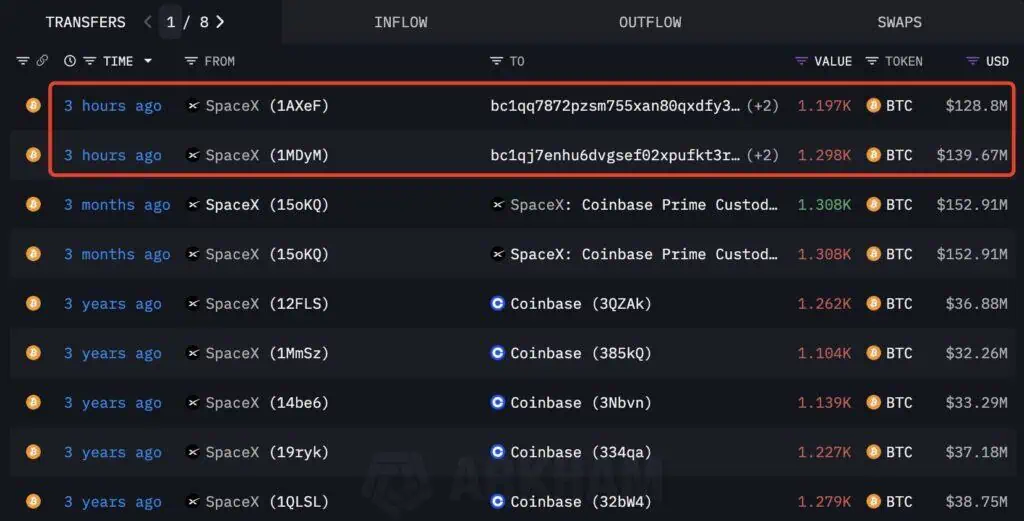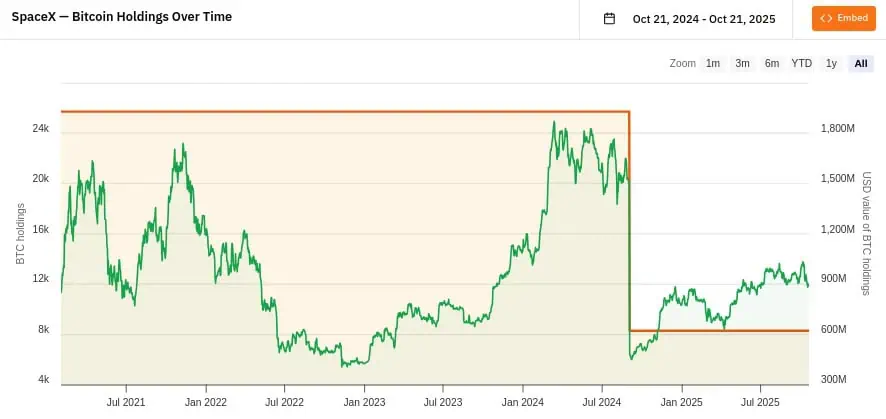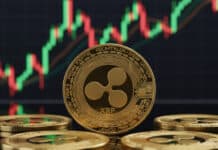
SpaceX has reactivated its Bitcoin wallet after a three-month period of inactivity, moving a considerable $268 million onto the network.
On Tuesday, October 21, SpaceX transferred 2.495 bitcoins, equivalent to approximately $268 million, from a known wallet to two new digital addresses. The transaction was detected by on-chain analysis firms such as Arkham Intelligence and Lookonchain, which classified it as a internal reorganization.
SpaceX isn't selling, it's reorganizing: it's trading Bitcoin from Bit2Me.According to analysts at these platforms, no deposits on exchanges or sell signals were identified, suggesting that the company keeps its Bitcoin-based treasury strategy intactHowever, this is SpaceX's first significant activity on the chain since July of this year.

This recent transaction has sparked the interest of analysts and market observers, not only because of the volume involved, but also because of the context in which it occurs. SpaceX, led by Elon Musk, holds a total of 8.285 BTC, valued at around $890 million, according to available data. Given this, many point out that the decision to move a significant portion of its BTC holdings without altering the total balance reinforces the thesis that Bitcoin remains a strategic asset for the aerospace company.
Bitcoin as a reserve asset: a sustained strategy since 2021
Since SpaceX added Bitcoin to its treasury in 2021, the company has preferred to maintain a reserved but consistent profile. Unlike Tesla, which has partially disclosed its Bitcoin sales in public reports, SpaceX, as a private company, is not required to reveal its financial transactions, which has opened the door for speculation whenever activity is detected in its digital wallets.
However, a look at records from platforms like Bitcoin Treasuries shows that on February 1, 2021, SpaceX held 25.724 BTC. By the end of 2022, that amount had dropped to zero, indicating that they likely sold or moved their assets. However, by September 2024, the company had increased its reserves again, accumulating 8.285 BTC again, which it holds untouched to this day.

Source: Bitcoin Treasuries
The October 21 BTC transfer marks the first on-chain movement since July, and the first material change in its reserves in a year. While not officially confirmed, some analysts suggest the new addresses could be linked to a more secure custody structure. At this time, there is no evidence that SpaceX is preparing a sale or asset conversion.
Several experts have commented that the internal reorganization could be due to accounting, operational, or security needs. In the crypto ecosystem, such moves often herald changes in custody infrastructure, internal audits, or adjustments in risk management. What is clear is that SpaceX has not reduced its exposure to Bitcoin in the last year, reinforcing the idea that the leading cryptocurrency remains part of its long-term financial vision.
Bitcoin consolidates its position as an institutional reserve. Enter now.Elon Musk and his energy vision of Bitcoin
The relationship between Elon Musk and cryptocurrencies has been complex and evolving. Although he has actively promoted assets like Dogecoin on social media, his relationship with Bitcoin has been more strategic. In 2021, Tesla bought BTC and then sold a portion, citing environmental concerns. SpaceX, meanwhile, has maintained a less visible relationship with cryptocurrency for years, until this recent reorganization.
However, this month, Musk publicly reinstated his endorsement of Bitcoin, this time from an energy perspective. In recent statements, he described , the energy that cannot be counterfeited, a phrase that sums up his vision of Bitcoin mining as a way to convert electricity into tamper-resistant digital valueHis stance, while contrasting with previous statements about the network's environmental impact, aligns with the growing institutional interest in sustainable mining and energy tokenization.

Musk's statements have been interpreted by some analysts as a validation of Bitcoin's security model, based on proof of work (PoW)In this model, miners compete to solve computational problems that require large amounts of energy, making Bitcoin a network supported by real energy expenditure. Apparently, for Musk, this expenditure now represents a form of digital authenticity that cannot be replicated by centralized or manipulable systems.
Trade BTC, an asset Elon Musk calls “authentic energy.”Additionally, this new approach by Musk also connects with the narrative of Bitcoin as “digital gold”, where value doesn't come from an institutional promise, but from a verifiable physical process. In this sense, mining becomes a way to anchor digital value to the energy reality, something that seems to resonate with the billionaire's vision of the future economy.
What this move reveals about Bitcoin's institutional maturity
SpaceX's transfer hasn't generated market volatility, indicating that investors aren't interpreting it as a sell signal. On the contrary, the fact that a private company with a high tech profile is reorganizing its holdings without reducing them reinforces the perception of Bitcoin as an institutional reserve asset.
These types of transactions also show how the crypto infrastructure has evolved. In 2021, similar moves sparked immediate speculation about sales or strategy changes. However, in 2025, analysts can distinguish between an internal reorganization and a liquidation, thanks to more sophisticated on-chain analysis tools.
Finally, for many, this move reaffirms that Bitcoin has become a legitimate financial tool within corporate strategies. By maintaining its current holdings and reorganizing them without selling them, SpaceX sends a clear signal that Bitcoin remains part of its long-term vision, both as a financial asset and as a symbol of a digital energy economy.
Create your account, buy Bitcoin and access the financial future


